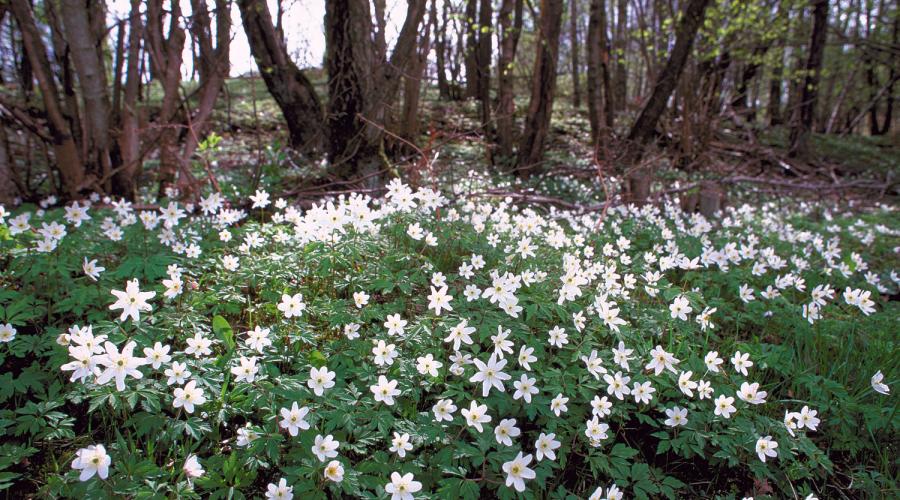
Woodland plants
Bluebells, primroses and twinflower are just some of the beautiful plants found in Scotland’s woodlands.
Bluebell woods
In summer, the leaf canopy of the trees plunges most woodlands into deep shade, starving the plants on the woodland floor of sunlight and food. Some woodland plants have adapted by growing in winter, flowering in spring and dying back in mid-summer.

©Lorne Gill.
Lesser celandine (Ficaria verna) leaves begin to grow in November and its golden flowers appear in the spring. You can also look out for the white of the wood anemone (Anemone nemorosa). To sustain their early burst of growth, these plants need an underground food store.
But the native bluebell (Hyacinthoides non-scripta) is the most impressive of such species, turning entire woodlands blue in May. This wonderful display is only seen on the Atlantic coast of Europe, where winters are relatively mild, and is at its best in Britain.
Pinewood plants
In our Caledonian pinewoods, the canopy is full year-round. Specialist pinewood plants include creeping lady’s-tresses (Goodyera repens), one-flowered wintergreen (Moneses uniflora) and the twinflower (Linnaea borealis). The latter has delicate pink or white flowers, two to a stalk, and a faint but delicious vanilla fragrance.

©Lorne Gill.
Protection of woodland plants
Discover how Scotland’s wild plants and fungi are protected.




